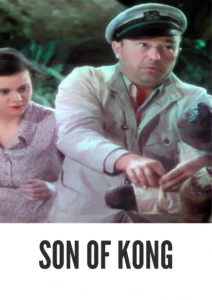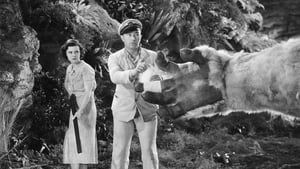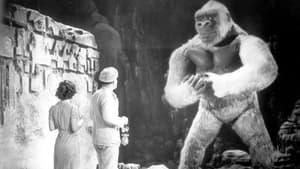Contact: info@alwanfilm.com
Video Sources 0 Views
- Watch trailer
- The Son of Kong


Synopsis
Table of Contents
ToggleReview: The Son of Kong 1933 Colorized – A Charming Sequel that Expands the World of Kong

Introduction
“The Son of Kong” (1933) serves as a delightful continuation of the iconic King Kong saga, offering audiences a charming and adventurous journey into the heart of Skull Island. In this article, we’ll explore the significance of this early sequel and its enduring legacy in the realm of monster movies.
Check The Full Colorized Movies List
Check Our Colorized Movies Trailer Channel
Understanding The Son of Kong 1933 Colorized: Director, Cast, and Genre
Directed by Ernest B. Schoedsack, “The Son of Kong” (1933) showcases his talent for crafting thrilling adventures filled with spectacle and heart. The film features a talented cast, including Robert Armstrong reprising his role as Carl Denham, the intrepid filmmaker who discovers the legendary Skull Island. With its blend of action, humor, and heartwarming moments, “The Son of Kong” (1933) continues to captivate audiences with its timeless charm.
Exploring the World of The Son of Kong 1933 Colorized: Plot and Characters
“The Son of Kong” (1933) follows the exploits of Carl Denham as he returns to Skull Island in search of redemption and discovers a surprising connection to the original King Kong. Along the way, he encounters a host of colorful characters, including the lovable offspring of the mighty Kong, who proves to be both friend and protector in the face of danger. As the adventure unfolds, audiences are treated to a thrilling journey filled with excitement, humor, and heartwarming moments.
The Art of Film Colorization
Film colorization has the power to transform classic movies, breathing new life into familiar stories and captivating audiences with vibrant hues. By digitally adding color to black and white films, colorization allows viewers to experience the magic of the silver screen in a whole new way, enhancing the visual appeal of beloved classics and introducing them to new generations of moviegoers.
Early Colored Films: A Brief History
The history of colored films stretches back to the early days of cinema, with filmmakers experimenting with various techniques to add color to their creations. From hand-painted frames to early Technicolor processes, the evolution of colored film has been marked by innovation and creativity, paving the way for the development of modern colorization techniques that continue to captivate audiences today.
The Son of Kong 1933 and Its Early Colored Version
The decision to release “The Son of Kong” (1933) in a colorized format was met with both excitement and skepticism. While some welcomed the opportunity to experience the film in vibrant color, others expressed concerns about the potential impact on its visual aesthetic. Nevertheless, the early colored version of “The Son of Kong” (1933) offers viewers a fresh perspective on the beloved sequel, enhancing its visual appeal and immersing audiences in the world of Skull Island like never before.
The Debate Over Film Colorization
The debate over film colorization continues to rage among cinephiles and scholars, with proponents praising its ability to breathe new life into classic movies and introduce them to new generations of viewers, while detractors argue that it compromises the artistic integrity of the original work. As the debate unfolds, filmmakers and audiences alike are left to ponder the merits and drawbacks of colorization in the ever-evolving landscape of cinema.
Examining The Son of Kong 1933 as an Early Colored Film
As with any colorized classic, the impact of colorization on “The Son of Kong” (1933) is a matter of personal interpretation. Some may argue that it enhances the film’s visual appeal and immerses viewers in its world, while others may feel that it detracts from the stark beauty of the original black and white version. Regardless of one’s stance on the issue, there’s no denying the enduring charm and appeal of “The Son of Kong” (1933) as a beloved sequel that continues to capture the hearts of audiences around the world.
Influence and Legacy: The Son of Kong 1933 Colorized’s Impact on Cinema
“The Son of Kong” (1933) has left an indelible mark on the world of cinema, inspiring countless filmmakers and captivating audiences with its timeless charm and thrilling adventure. From its lovable characters to its breathtaking special effects, the film continues to resonate with viewers of all ages, reaffirming its status as a beloved classic of the monster movie genre.
Director’s Cinematic Legacy: Beyond The Son of Kong 1933 Colorized
Ernest B. Schoedsack’s influence extends far beyond “The Son of Kong” (1933), with a diverse body of work that continues to captivate audiences around the globe. From “King Kong” to “Mighty Joe Young,” Schoedsack’s films are celebrated for their groundbreaking special effects, compelling storytelling, and enduring legacy in the world of cinema. Through his visionary work, Schoedsack has left an indelible imprint on the history of filmmaking, inspiring generations of filmmakers to follow in his footsteps.
Themes Explored in The Son of Kong 1933 Colorized
“The Son of Kong” (1933) explores a variety of themes, from friendship and loyalty to the bond between parent and child. Through its endearing characters and thrilling adventure, the film invites viewers to ponder the complexities of the human experience and the enduring power of love and redemption in the face of adversity. As audiences journey to Skull Island once again, they are reminded of the timeless truths that unite us all and the boundless possibilities of the human imagination.
Reception and Controversy Surrounding The Son of Kong 1933 Colorized
Upon its release, “The Son of Kong” (1933) received widespread acclaim for its charming characters, thrilling adventure, and groundbreaking special effects. However, the decision to release the film in a colorized format sparked debate among purists, reigniting the age-old discussion surrounding film preservation and artistic integrity. Despite the controversy, “The Son of Kong” (1933) remains a beloved classic that continues to captivate audiences with its timeless charm and enduring legacy in the world of cinema.
Where to Watch The Son of Kong 1933 Colorized Online
For those eager to experience the magic of “The Son of Kong” (1933), the film is readily available on popular streaming platforms such as Netflix, Amazon Prime, and Hulu. Whether you choose to watch it in its original black and white format or the early colored version, “The Son of Kong” (1933) promises to transport you to a world of adventure and wonder, where the spirit of King Kong lives on in the heart of his lovable offspring.
FAQs About The Son of Kong 1933 Colorized
Q: Is “The Son of Kong” (1933) based on a true story? A: No, “The Son of Kong” (1933) is a fictional sequel to the iconic King Kong saga, crafted by screenwriter Ruth Rose and director Ernest B. Schoedsack.
Q: Who are the main actors in “The Son of Kong” (1933)? A: “The Son of Kong” (1933) features an ensemble cast led by Robert Armstrong, who reprises his role as Carl Denham, and Helen Mack, who portrays the plucky heroine Ann Darrow.
Q: What awards did “The Son of Kong” (1933) win? A: While “The Son of Kong” (1933) did not win any major awards, it received critical acclaim for its groundbreaking special effects and endearing characters.
Q: Why was “The Son of Kong” (1933) released in a colorized format? A: The decision to release “The Son of Kong” (1933) in color was made to introduce the film to a new generation of viewers and enhance its visual appeal for modern audiences. While the choice to colorize the film sparked debate among purists, it ultimately allowed “The Son of Kong” (1933) to reach a wider audience and ensure its continued relevance in the annals of cinematic history.
Conclusion
“The Son of Kong” (1933) stands as a charming sequel that expands the world of Kong, inviting audiences to embark on another thrilling adventure into the heart of Skull Island. With its lovable characters, breathtaking special effects, and timeless charm, the film continues to captivate audiences of all ages, reaffirming its status as a beloved classic of the monster movie genre. Whether viewed in its original black and white format or the early colored version, “The Son of Kong” (1933) promises to transport viewers to a world of adventure and wonder, where the spirit of King Kong lives on in the hearts of all who dare to dream.













